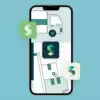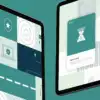 Solventure
Solventure
From consulting slides to clickable software: a product story
The team at Solventure are supply chain experts. For years, they’ve supported large manufacturing companies with complex planning decisions.
But they saw a bigger opportunity: build a digital product that could scale that expertise, give clients real-time insights, and create a new business model alongside their services.
They had the vision. What they needed was help shaping the product, the process, and the team behind it. That’s where we came in.
How we helped
- We shaped the vision together
We kicked things off with collaborative vision workshops to align the team and define where the product could create the most impact. That led to a clear product vision, one that everyone could get behind, and that we could use to guide discovery and roadmap decisions. - We tested assumptions with real people
To validate the opportunity, we sat down with CFOs and business leads, the people who would eventually use the product, and asked about how they make portfolio decisions. What external data do they use? What’s missing today? Those conversations gave us the clarity we needed on personas, pain points, and potential value. - We made the vision tangible
From all the interviews, we gathered 100+ “how might we” questions, fuel for future features and service ideas. This helped us translate insight into opportunity, and shape a product direction that felt grounded and relevant. - We built and tested, then built again
We designed several prototype versions of the tool and tested them with target users in supply chain roles (including one surprisingly fruitful deep dive into the world of cookie manufacturing). What worked, we kept. What didn’t, we improved. Throughout, we documented insights, shared findings with the dev team, and worked closely with them to ship the first real product.


What changed (and why it matters)
-
A real product solving a real need
Together, we built a working SaaS tool based on user research, with high usability and only the features that mattered most. -
A confident team using product thinking
The team learned by doing: interviewing users, running discovery, and shaping prototypes. They now apply these skills independently. -
A long-term partner they still trust
Even after launch, the relationship continued. We still run workshops when needed, and occasionally get a WhatsApp for a second opinion.